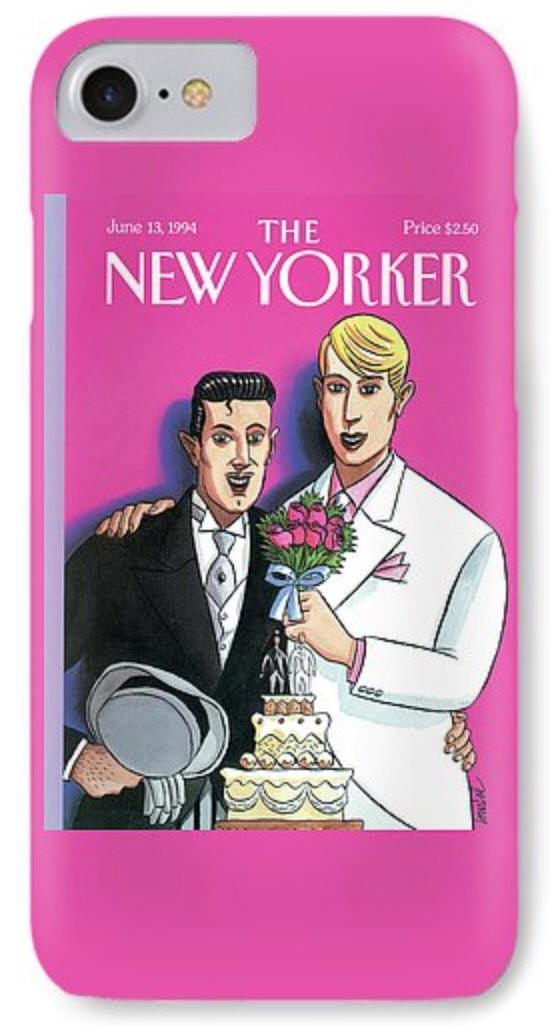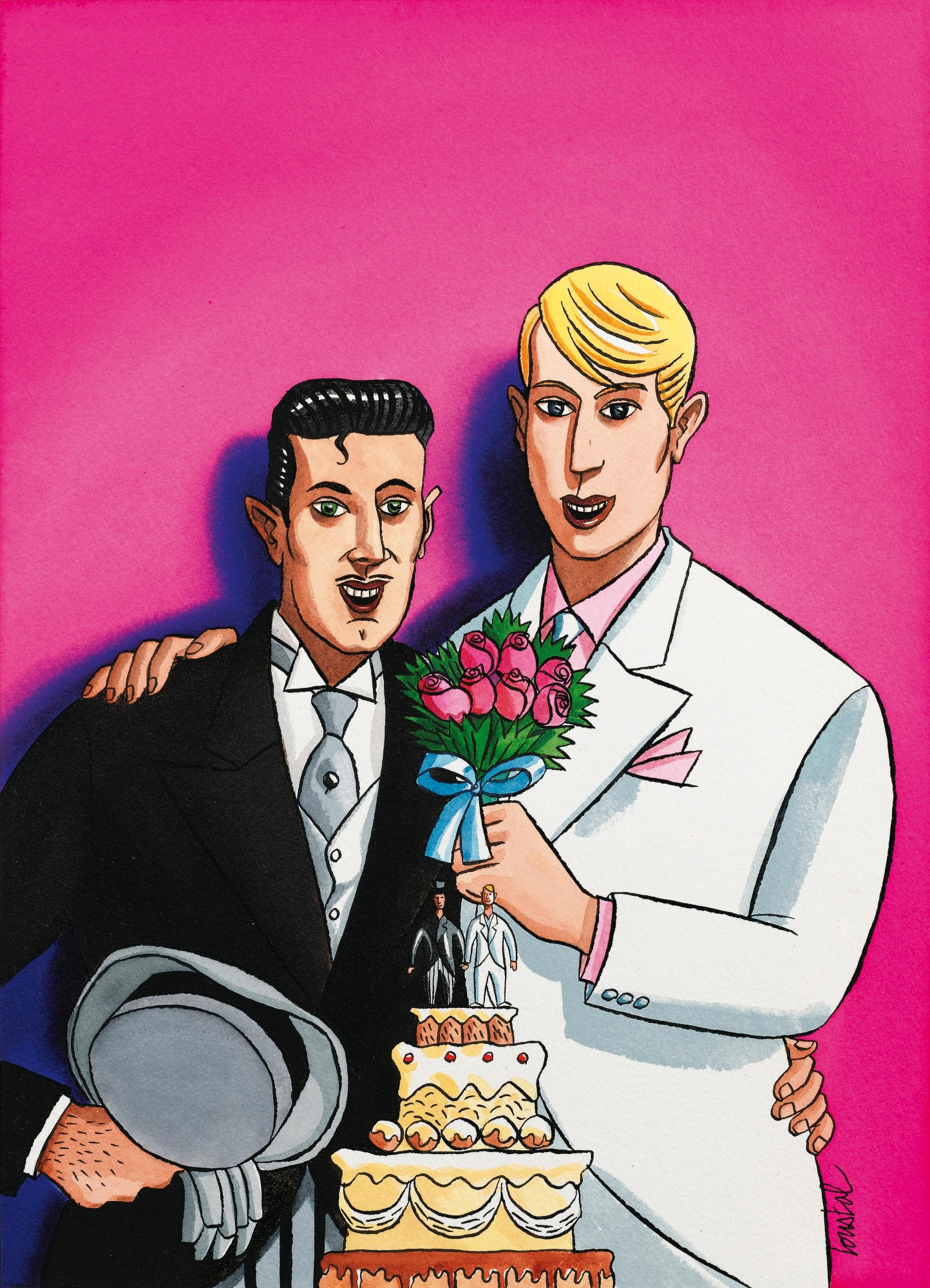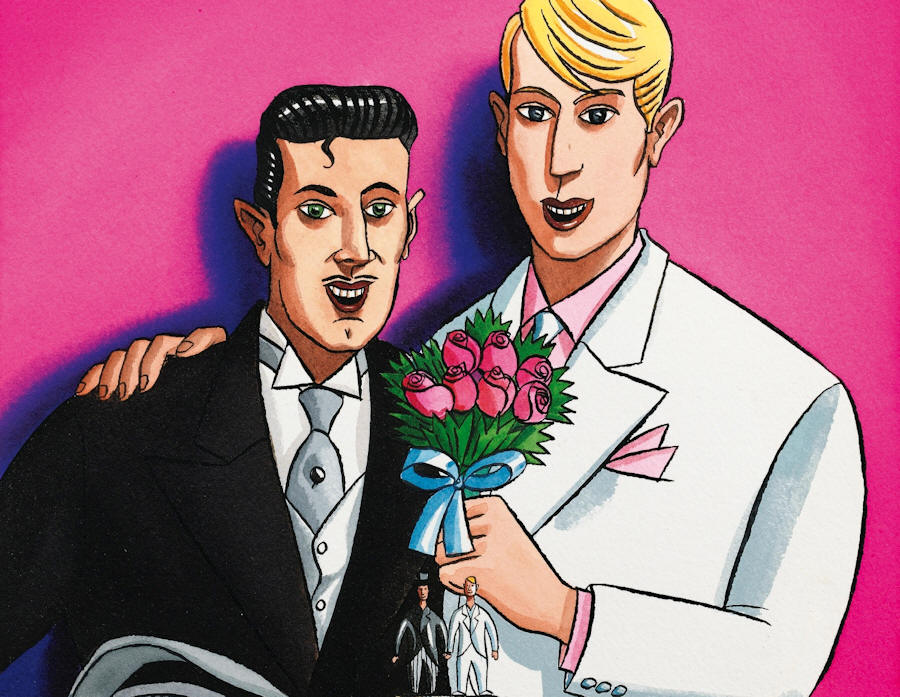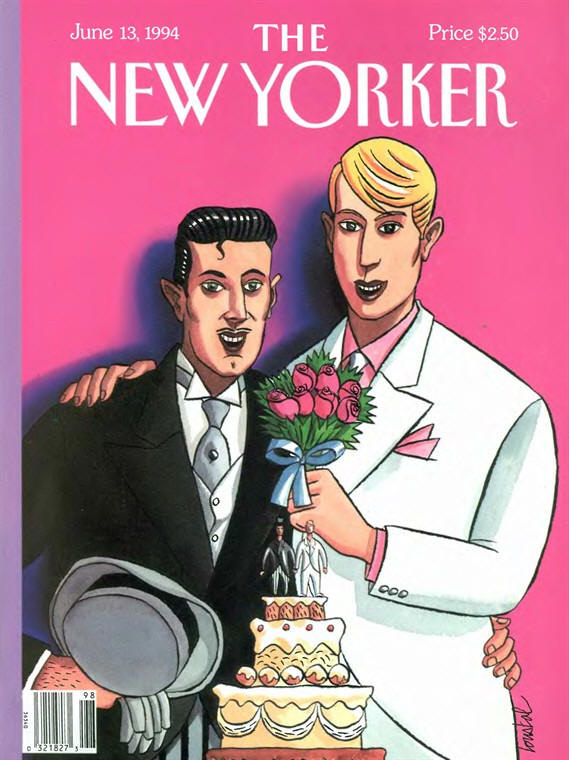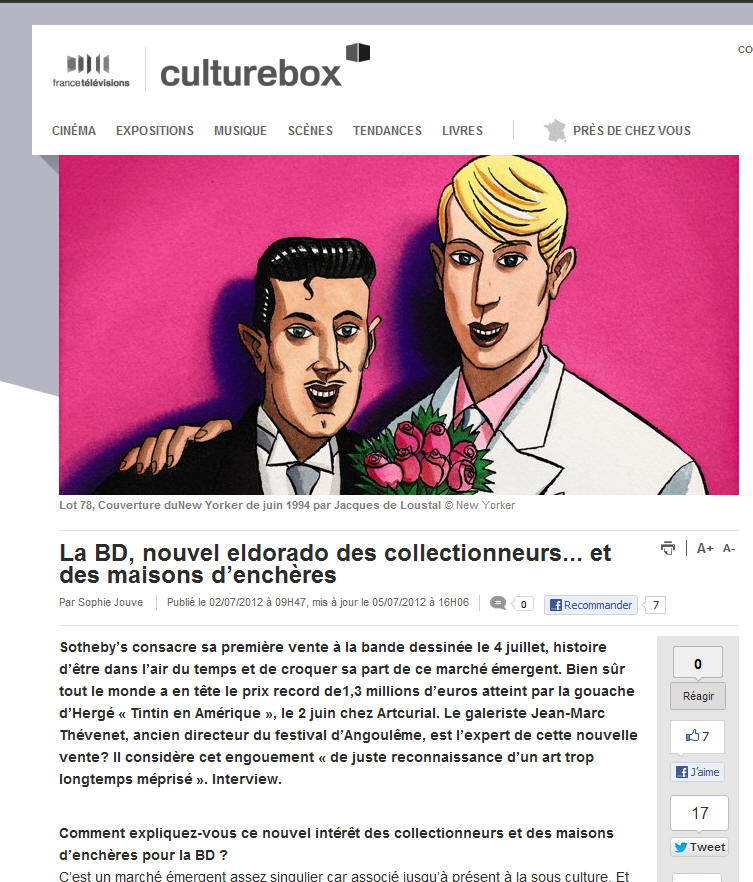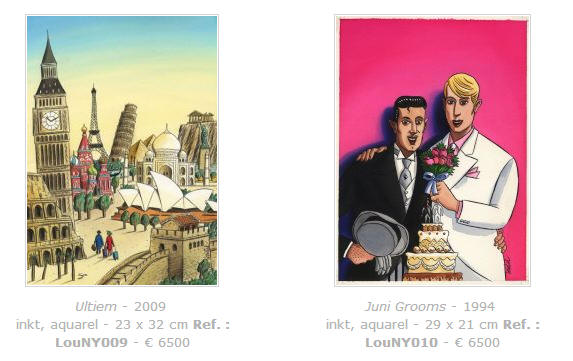1994 June Grooms
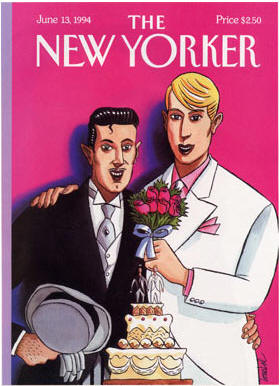
"June Grooms" / by Jacques de
Loustal
cover of The New
Yorker,
v. 70, no. 17 (June 13, 1994)
: The pose
for a gay wedding photo.
This whimsical cover to The New
Yorker during Gay Pride Month is a
refreshing reprieve simply because
there is no corresponding article about
the event. In New York and many other
locales, Gay Pride month, along with its
celebrations and parades, is simply
becoming Christmas in Summer.
Between Obama’s historic endorsement of gay marriage and allegations that
Mitt Romney bullied a gay classmate in Prep school, this seems like as good
a time as any to discuss homosexuality in America. (2012:
http://blowncovers.com/post/22850029164/this-weeks-theme-the-gays)
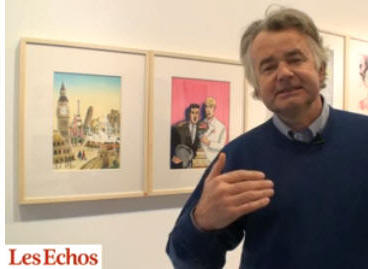
2012 Jacques de
Loustal " exposition d'oeuvres originales de couverture du
New Yorker."
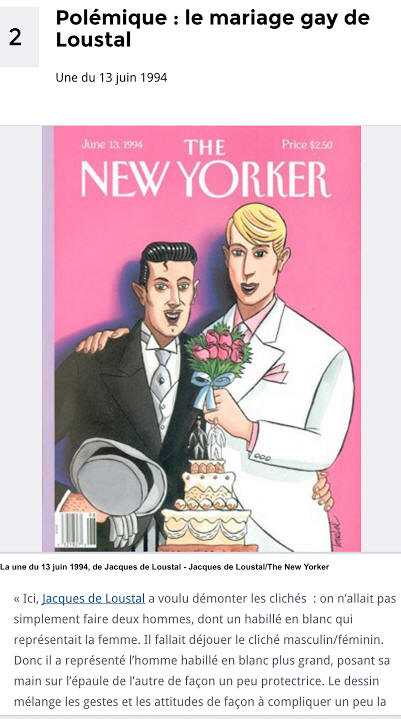
le mariage gay de Loustal
http://rue89.nouvelobs.com/2012/10/26/six-unes-emblematiques-new-yorker-racontees-francoise-mouly-236502
« Ici, Jacques de Loustal a voulu démonter les clichés : on n’allait pas
simplement faire deux hommes, dont un habillé en blanc qui représentait la
femme. Il fallait déjouer le cliché masculin/féminin. Donc il a représenté
l’homme habillé en blanc plus grand, posant sa main sur l’épaule de l’autre
de façon un peu protectrice. Le dessin mélange les gestes et les attitudes
de façon à compliquer un peu la chose, pour donner plus de dimension à
l’image.
C’était en 1994, on commençait à peine à parler de la possibilité du mariage
gay. A partir de 2003, il y a eu la légalisation, d’abord dans l’Etat du
Massachusetts, en Californie puis dans l’Etat de New York. Et cette année,
le président Barack Obama a déclaré son soutien au mariage gay. Une grande
évolution de mœurs.
A l’époque, ça a évidemment créé une polémique. Maintenant, quand je veux
illustrer le mariage gay, c’est la seule chose que je ne peux plus montrer
parce que l’image est devenue banale. »
sothebys: Loustal Jacques de Loustal dit (né en 1956) Couverture du New
Yorker, Juin 1994
Cette couverture réalisée pour le New Yorker à la demande de Françoise Mouly,
directrice artistique et créatrice avec Art Spiegelman de la célèbre revue
Raw où sont publiés des artistes comme Joost Swarte ou Ever Meulen, présents
à cette vente, fit «couler beaucoup d'encre» par son sujet, le mariage
homosexuel, et peut-être....son traitement de la couleur, un rose tirant sur
le fluo, étendard d'une cause encore d'actualité...Cette même couverture
figure dans l'ouvrage Blown Covers, New Yorker covers, you were never meant
to see de Françoise Mouly...soit les couvertures les plus polémiques de la
revue.
Jacques de Loustal: The Timely and the Timeless
For a long time, the covers of The New Yorker tended to have no relationship
to the content of the magazine or to current events. Covers typically showed
scenes of New York City and surrounding areas as well as vacation spots, or
domestic scenes, or artistic flights of fancy. This was typical of the
magazine under editor William Shawn, and to some degree this type of cover
is still published today. The changing of the seasons are duly noted, but
for most covers of this sort, they could as easily have been published a
year or two later, with little change in their impact.
That changed under the editorship of Tina Brown, and it persists with David
Remnick as editor. Today The New Yorker's covers can broadly be grouped into
two categories. One type depicts, as before, scenes of everyday life typical
for the time of year. The other attempts to capture the mood of a specific
moment in our history and to comment upon it. These covers are often overtly
political. They may be deliberately provocative and tend to get a lot of
attention in the press and online. Often, they wouldn't work if publication
were delayed by even a week or two.
Sotheby's Paris is about to sell two examples of original New Yorker cover
artwork by Jacques de Loustal, a popular illustrator based in Paris. As it
happens, these pieces demonstrate both types of approach to the magazine
cover, the provocative and the evocative, the timely and the timeless.
Loustal's cover art to the June 13, 1994 issue has a gay marriage theme and
is entitled June Grooms. It is probably one of the earliest mainstream
magazine covers with such a theme, and as such makes a strong political
statement. Unlike most of the timely covers, it is not so much a reflection
of its time as ahead of its time. I find it at once sedate and garish,
elegant and unappealing. I mean, that blond groom could do so much better
for himself!
The cover to the April 18, 2011 issue appears to show the French or perhaps
the Italian Riviera. If Sotheby's 2009 date for the artwork is correct, then
this is indeed an example of a cover that could have been run in any spring
or summer, including the spring two full years after its creation.
http://attemptedbloggery.blogspot.nl/2012/06/jacques-de-loustal-timely-and-timeless.html
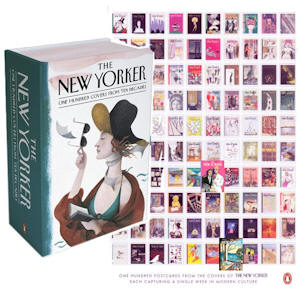
2012 Postcards from The New Yorker
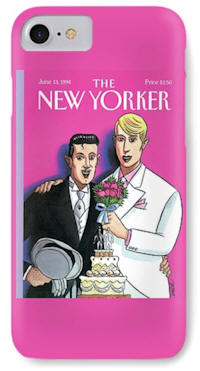
Two Grooms At Their Wedding Infront iphone 7 case by Jacques de Loustal. Protect your iPhone 7 with an impact-resistant, slim-profile, hard-shell case. The image is printed directly onto the case and wrapped around the edges for a beautiful presentation. Simply snap the case onto your iPhone 7 for instant protection and direct access to all of the phone's features!
|
2012 Sotheby's bande dessinée Loustal
|
